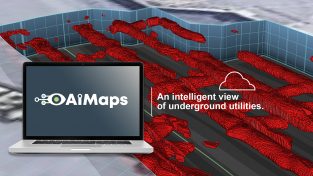Utility providers are stepping up efforts to improve their ability to withstand a storm and recover from it for an overall more reliable grid. With many preventative actions taking place, are they truly covered? To better prepare and recover from the next storm, there are two key focus areas that should be addressed on blue-sky days.
Hardening the transmissions and distribution infrastructure
The first approach is far from new, but prevention remains key in this better-known strategy. Just last year, Florida’s regulated utilities presented a hardening plan to better withstand hurricanes. Hardening programmes look for ways to protect utility assets against all types of weather, not just hurricane events. Many utilities are now including hardening for fire and anti-corrosion, especially in wildfire and flood-prone areas.
Reducing the impact a storm or natural event has on the grid reduces outages and maintenance costs and improves a utility provider’s ability to allocate resources with fewer overall damaged areas. Utilities have been upgrading poles and structures with stronger materials for years as a means of hardening the system. Another common hardening activity is to strengthen poles by installing guy wires and upgrading cross arm materials. Shortening the span length also can improve storm resistance, but this requires adding poles.
All these efforts require putting considerable effort and money into more complex infrastructure changes to achieve a storm-ready grid. However, there is only so much hardening that can be done. To truly prepare for the next inevitable storm, these steps must go hand in hand with improved resiliency efforts.
Improving resiliency to the grid after impact
Once a utility has done all it can to physically prepare, the focus switches to its ability to recover post-event. Outside of the physical components themselves, there’s a lesser-known piece in the resiliency puzzle to consider. What parts of the grid were affected? How many field personnel are needed to recover at each damaged site? Even the best, most up-to-date electric infrastructures require a plan to get lights on after a storm. This is where a damage assessment solution becomes a necessity and a key contributor to a utility’s resiliency.
Modern technology takes a lot of the guesswork out of the recovery process, and this is only expanded with a damage assessment solution. Field workers can capture up- to-date information on their tablets and send it back to the office, where storm-affected areas can be prioritised, crews can be assigned and assets can rapidly be repaired.
A flexible solution that integrates with an existing outage management system can provide a significant amount of improvement to a grid’s recovery. Better poles withstand stronger winds, smart meters inform utilities sooner and a good damage assessment solution gets the lights on faster.

















